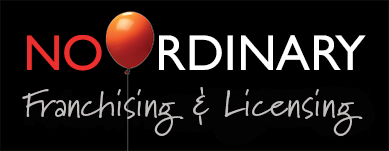You may think that the only ways you can get more profit from your franchise is to sell more franchises and help your franchisees grow their sales. But savvy franchisors know that’s just the beginning. We’ll start with the ideas you can start implementing today…
1. Stop discounting
Of course, we recognise that businesses such as Briscoes and The Warehouse rely on discounting to bring in bring in masses of customers on an almost continuous basis, but we also recognise that their pricing strategy is sma
rtly planned and structured. Often they only discount to move end-of-line products and products on which they have already negotiated discounts from suppliers. Many manufacturers sell their primary products at a discount (or even a loss) in order to generate an ongoing stream of high-margin consumables – the computer printer industry is an example of this. Our point is, however, that if you’re discounting without a clear sales, pricing and profit margin strategy, you may be giving away more than you need – in fact, you may be giving away your business.
2. Raise your prices (seriously)
The laws of competition dictate that the pricing for comparable products or services should be around the same across a range of suppliers, but often this simply isn’t the case. All kinds of variations can occur depending on factors such as availability, packaging, supply chain costs and company image. It is well established that a price increase is more effective in increasing the bottom line than reducing costs. We’ve all heard McKinsey’s theory that a mere 1% price increase will generate an 8% profit increase, yet many of us are reluctant to test it. Testing is the key. We’ve recommended this to clients who’ve found that a price rise has actually improved sales or, in several cases, that sales fell but because their profitability went up, they actually made more money.
3. Restructure your pricing
You may be thinking here “Ooops, they’ve accidentally repeated themselves” but we haven’t. Restructuring prices is different from raising them. In some cases, you may even want to lower your prices. But before you stop reading this in disgust, let us explain. Do you charge all customers the same price? If so, why? You’ll invariably find that some are less price sensitive than others, especially if they’re not paying for the bills themselves, e.g. government or larger organisations. You’ll also find that customers are prepared to pay more in certain circumstances than others. For example, Caterpillar, the giant heavy machinery manufacturer, bases its charges for spare parts on how urgently its customers need them. If an earthmoving machine on a construction site breaks down, the resulting downtime can cause delays in the project which can result in penalties for the construction company. For this reason, paying more for an urgently needed part to be flown in is not an issue. It’s a win/win situation for both Caterpillar and their customer. Incidentally, Caterpillar makes more from its spare parts business than it does from its heavy machinery business.
4. Don’t compete on price
We’ve done it again! If you’re a pricing expert, you’re no doubt frustrated by what you see as us labouring the same point. But trust us, this point is subtly different from the last three. The reality is that people don’t buy on price, they buy on value. You may poo-poo that as marketing nonsense, but we guarantee that somewhere in your life, you have been prepared to pay top dollar for what you valued more than other comparable offerings. For example, the car you’re driving may have cost you a pretty penny because it exemplifies what you (and BMW) see as “the ultimate driving machine”. The house you live in may have been worth the substantial investment because many of your friends and business associates live in the same neighbourhood (yet you could have bought into a lesser neighbourhood without promising your first-born to the bank). No doubt you’re beginning to see our point. It is – rather than compete on price, differentiate your product or service by understanding what’s most important to your customers and giving it to them.
5. Start selling online
Just because everyone’s doing it doesn’t mean it’s right for your business, but more and more franchises are using e-commerce to extend their coverage beyond their franchise network and give their customers an alternative sales channel. Many franchisors avoid any potential conflict of interest by giving their franchisees a cut of their online sales, especially where customers may be using their franchisees for “showrooming” – that is, checking out physical goods in a store and then buying online. We recently bought a pair of running shoes on Stirling Sports’ e-commerce site because we were afraid they wouldn’t have our size instore.
6. Review your costs
Costs are something that many people in business take for granted – so much so that many business owners only track their costs for tax purposes and never really take the opportunity to review them strategically. The question to ask yourself is: What value is this cost adding to my business? The old saying that you need to spend money to make money is perfectly true, but some spending generates more money than other spending. As your business grows, you’ll find more opportunities to achieve economies of scale and group and volume buying discounts.
7. Look for roadblocks
Roadblocks are constraints that are limiting your business’s potential. They can include the availability of finance, access to supply and your own competencies. In other words, the weakest link in the chain. Eliyahu M. Goldratt in his book The Goal presented his Theory of Constraints (TOC) and showed that a business’s real constraints aren’t always obvious. We recommend if you’re involved in manufacturing that you read The Goal and if you into marketing (and who isn’t?), Goldratt’s It’s Not Luck. Warning: Goldratt has written both these books as novels to get his points across, and they’re excruciatingly written, but if you can get past that, they’re well worth the read.
8. Know how your franchisees are performing
“What?” you say. “I know exactly how my franchisees are performing. I get their sales reports every month.” All well and good, but how are your franchisees really performing? What forward work have they got? How many long-term contracts have they secured? What gross profit margins are they achieving? How is their customer satisfaction rating? The thing many franchisors forget is that sales are only the result of a combination of other factors – and unless you understand and measure those factors, you’re never going to fully understand how your franchisees are performing.
9. Train your franchisees to be better marketers
Even in franchises such as lawnmowing and cleaning where franchisees normally just buy their work with the franchise, training your franchisees in sales and marketing skills can pay off in new business generated by the franchisees themselves. We’ve just been asked for help in doing this by a major national franchisor. And what we’re not telling him is that it’s actually very simple – just appeal to the self-interest of the franchisee and they’ll do what it takes.
10. Take a look at your customers
Who are your best customers? No, not necessarily the ones with the biggest volumes, but those you make the most money from. What could you do to get more of those kinds of customers? Have you asked your best existing customers for referrals? On the other side of the coin, who are the customers you make least from? Never be afraid to fire customers!
11. Add new income streams
It’s a good idea to ‘stick to the knitting’ when you first start your franchise, but once it’s established, you may be able to leverage your franchisees’ customer base with ‘line extensions’ – new ways of extending your existing product or service lines – or new products and services which complement your existing range. How about offering services to support your products, or products to support your services? Chances are, your customers will love your new offering, your franchisees will love their greater revenue – and you’ll love your extra profitability!
12. Improve your relationship with your suppliers
For too many franchisors, this means just one thing – renegotiating prices. But putting that kind of pressure on your long-standing suppliers can have a detrimental effect, forcing them to drop their quality or service standards. Often it’s better to take a collaborative and value-based approach to working with your suppliers, consulting with them on more efficient ways to meet their needs as well as yours. These days, collaborative strategies such as shared inventory management, product development, just-in-time delivery and joint promotions are delivering more value to franchises than price-squeezing.
13. Replace under-performing franchisees
Let’s get real here – you’re always going to have some franchisees who, despite your best efforts to train, support and motivate them, perform at a lower level than your other franchisees. You have three options here. Do nothing, move them on or give them the opportunity to sell their business. Whichever option you choose, you need to face up to the fact that it’s your fault they’re in this situation. You selected them in the first place, indicating that there’s something wrong with your franchisee selection process. That will need to be addressed before you make the same mistake again.
14. Buy out your best-performing franchisees
Unscrupulous franchisors have been known to conjure up unfair means of kicking out top performers so they can take over their businesses themselves and make more money out of them than by collecting mere royalties. We would recommend the honest approach – offer to buy out these franchisees or use the franchisor first-right-of-refusal clause if they happen to be selling.
15. Put your franchise royalty up
Because this is generally the hardest way for a franchisor to increase profitability, we’ve left it for last. But we have been successful in working with several clients who’ve inherited franchises with unsustainably low royalties or have seen the need to provide their franchisees with better support and systems than their current royalty structure makes possible.
There are several approaches which have proved effective. Because a franchise agreement is a legal and binding document which cannot normally be altered during the term of the franchise, one approach is to leave the royalty as it is but charge the franchisees separately for extra services and systems. For example, the agreement may give you the right to levy additional fees for a new financial system you’ve implemented or a new salesperson you’ve hired to support the franchisees. Some agreements include the provision to alter them if you have the support of a majority of your franchisees. We worked with one client who needed 51% of his franchisees to agree to a royalty rise but managed to persuade 100% to agree.
I'm Robin La Pere of No Ordinary Franchise Consultants. In addition to my franchising experience, my background in marketing, in which I am qualified to MBA level, has given me a unique perspective on what it takes to maximise a franchise system's pricing and profitability.
I am based in Auckland, New Zealand, but works with clients all over the world. To arrange for a free Initial Consultation, contact me at robin@noordinary.co.nz or use the Contact Form.
Relevant Articles
A major strength of franchising is that it’s based on tried and true business models. Trouble is, in this fast-changing business environment, what’s tried and true one year may be tired or irrelevant the next.
Not surprisingly, one out of three franchisors is concerned about the viability of their business model.
The 'Business Model Canvas' has emerged as a powerful tool for developing and updating business models. Recognising that franchise businesses differ in several ways from other business types, I have come up with a new version of the Business Model Canvas designed specifically for franchises.
Send me your email and I'll email you my e-book The Business Model Canvas for Franchisors:




